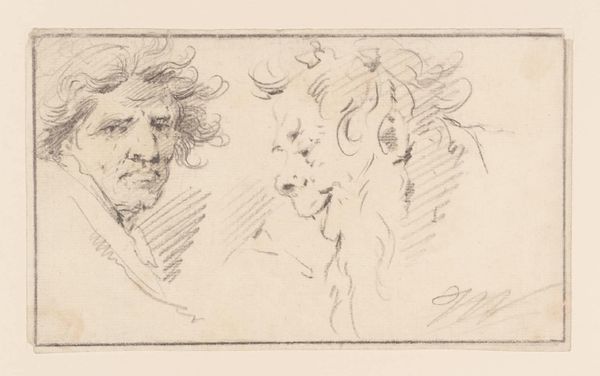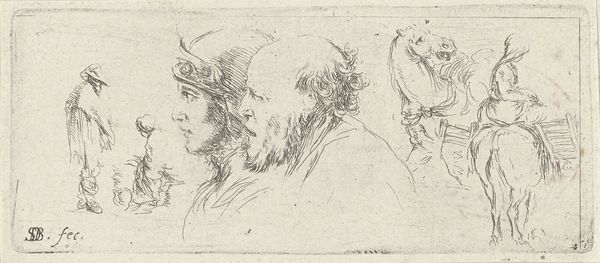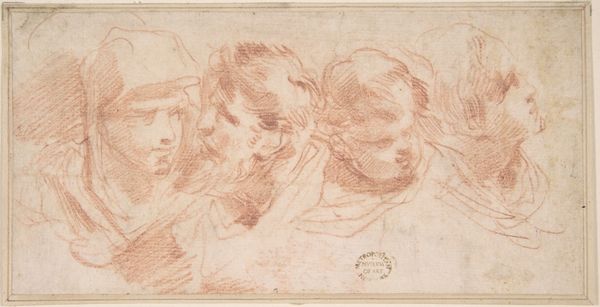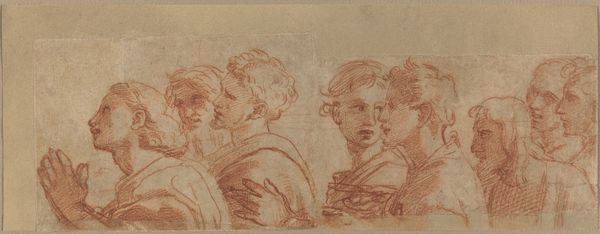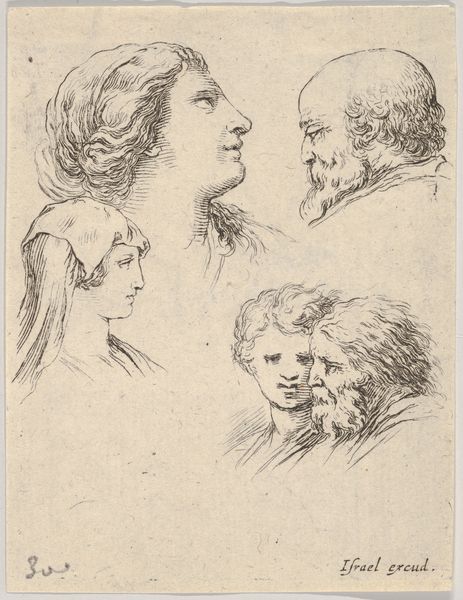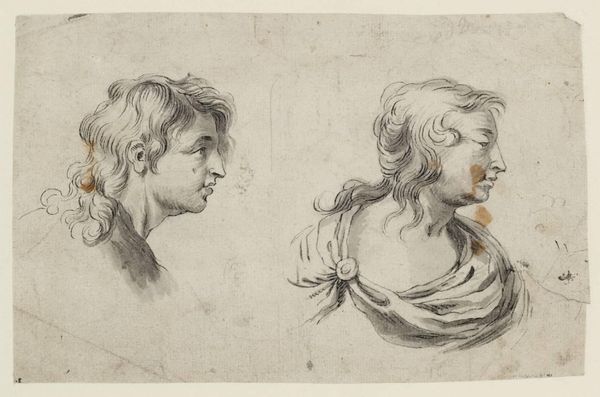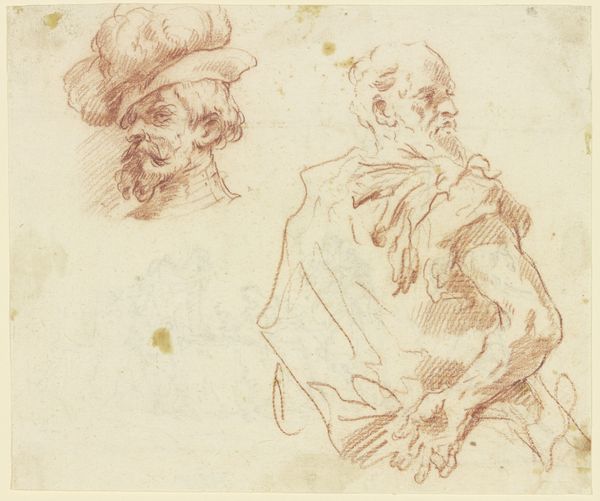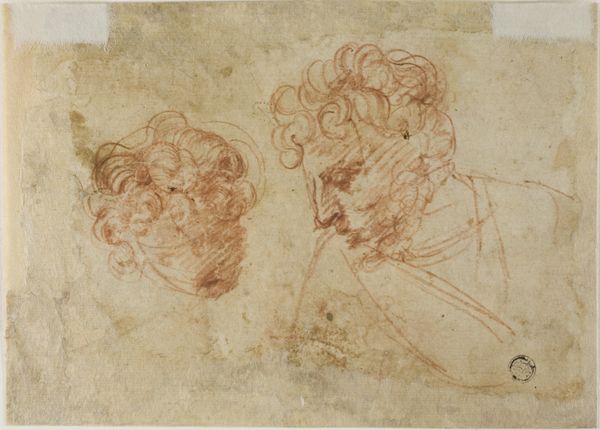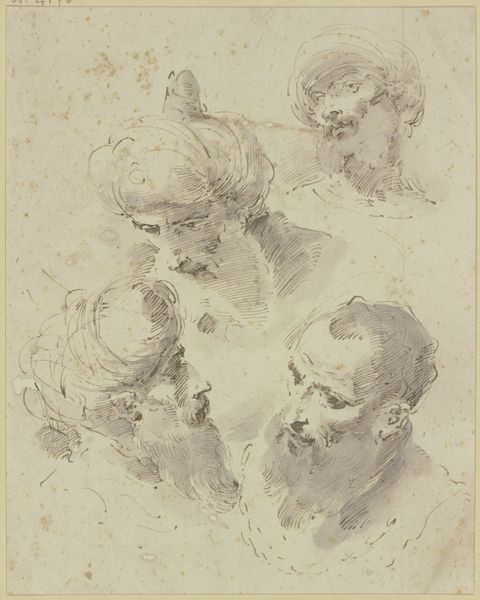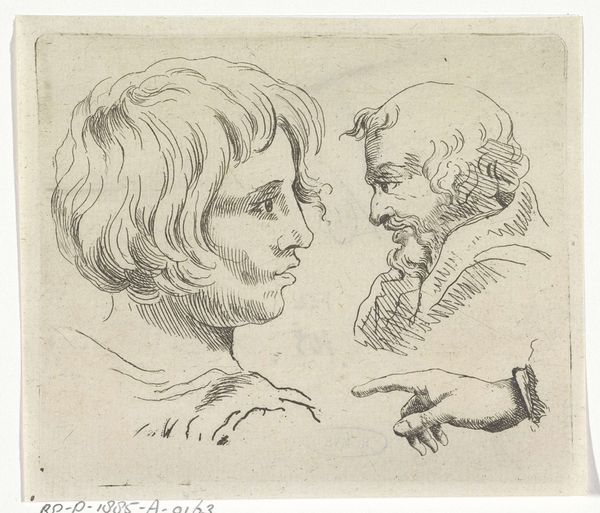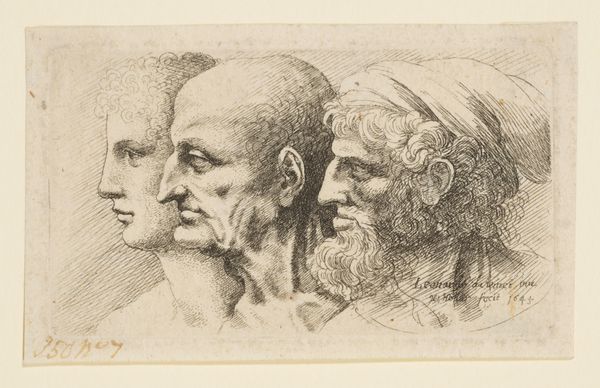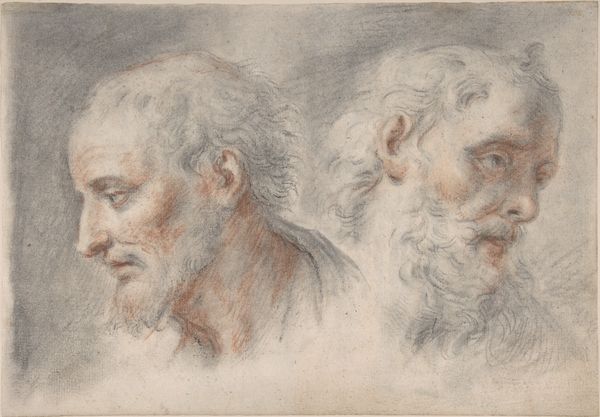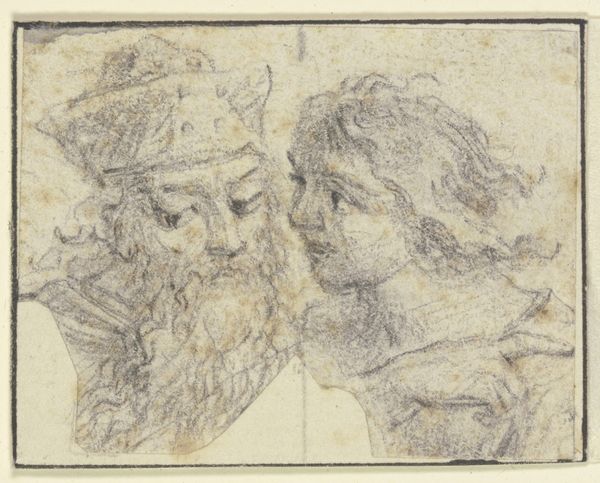
drawing, paper, watercolor, ink
#
portrait
#
drawing
#
classical-realism
#
charcoal drawing
#
paper
#
watercolor
#
ink
#
genre-painting
Dimensions: height 80 mm, width 102 mm
Copyright: Rijks Museum: Open Domain
Curator: This is Jan de Bisschop's "Two Children and a Satyr," a drawing currently housed at the Rijksmuseum. The piece dates roughly between 1648 and 1671. Editor: It’s quite striking. The satyr's expression, especially compared to the children's softer features, creates a really interesting tension on the page. The monochrome ink-and-watercolor wash emphasizes that contrast. Curator: Bisschop was quite interested in classical antiquity and its visual representation; his role in the dissemination of artistic knowledge via prints is notable. How does this piece, do you think, participate in the larger narrative of classically-inspired art of the period? Editor: Well, he is making clear and effective use of the readily available, inexpensive materials of paper and ink to make what might have otherwise have been a formal commissioned oil work more accessible. Look how the layered ink washes define volume so quickly! What would this have meant to an aspiring artist copying the design? Curator: That accessibility also mirrors the evolving public perception of mythological figures at that time, wouldn’t you agree? The satyr, once revered, becomes almost a figure of folklore, viewed with a detached, if still curious, gaze by the children. Bisschop gives the viewer access to those nuances. Editor: Folklore *and* visual precedent! The ready availability and relative low-cost replication enabled by paper and ink enabled new artistic trends that could only be consumed previously by society's upper echelons, thus contributing to the wider dissemination of both image-making practices and mythological tropes. Curator: And in that regard, this work encapsulates the shift from courtly patronage to a broader, more civic engagement with art. Editor: The use of wash mediates tones and contributes an ethereal feeling in its material execution and final appearance, yes. Ultimately this small-scale study says much about both the labor of artistic reproduction *and* the wider impact of newly broadened social consumption and artistic creation practices. Curator: I appreciate the lens through which you examine his working methods in concert with his broader cultural context. It's helped me understand Bisschop's place within both his physical output as well as society a bit more concretely. Editor: And you've pinpointed how an increased ability to study images like these enabled a fascinating cultural dialogue in its own right! Thank you for shedding light on its classical connections.
Comments
No comments
Be the first to comment and join the conversation on the ultimate creative platform.
